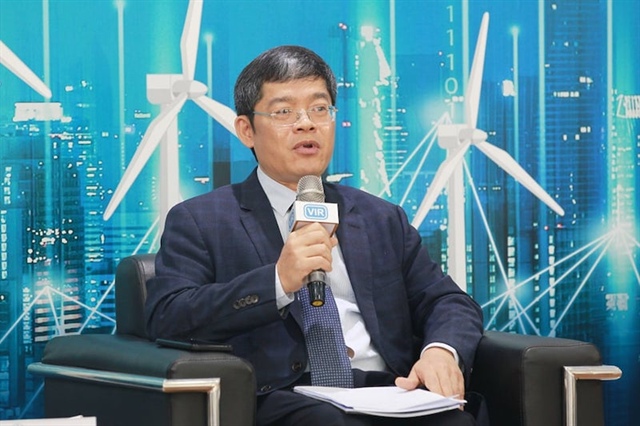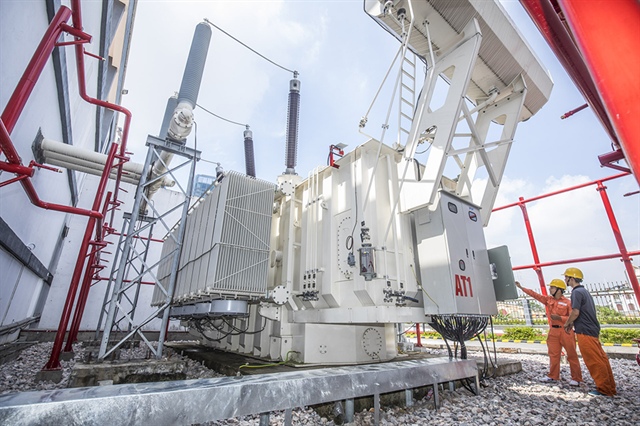EVN pledges no power price hike in 2022
EVN pledges no power price hike in 2022
The government requests no power price hike to serve the recovery plans.
Vietnam Electricity (EVN), the country’s sole power distributor has said it would not raise electricity prices throughout this year.

Vietnam Electricity (EVN)'s Deputy General Director Nguyen Tai Anh at a conference on April 8. Photo: Minh Anh |
The company could balance its financial status amid increasing input costs greatly due to the sharp increase in global prices of primary materials, EVN Deputy General Director Nguyen Tai Anh said at a conference held on April 8.
He said the prices of materials surged after the armed conflict in Ukraine. Accordingly, the prices of coal and gas tripled to around US$200/ton and $20/one million BTU, respectively, while steel prices used for power projects are also on the rise.
However, the power prices have been unchanged for the past three years.
EVN’s commitment shows its strict compliance with the government’s request on keeping the power prices unchanged for post-pandemic economic development, Anh said, but it’s hard for the company to hold the prices for next years.
As of end-2021, Vietnam’s installed power capacity reached 77,811 megawatts (MW), the highest in Southeast Asia.
EVN runs projects accounting for one third of the country’s total power output while the remaining are operated by the Vietnam Oil and Gas Group (PetroVietnam), the Vietnam National Coal – Mineral Industries Holding Corporation (Vinacomin), and the private sector.
Vietnam’s maximum load capacity (Pmax) is about 43,000MW. To keep the system safe, it needs some 15% standby capacity.

EVN staff check a power transformer station. Photo: GIZ |
Challenges for investment
Vietnam needs approximately $142.6 billion for power generation and distribution projects by 2030, or roughly $14 billion/year throughout the period, according to Nguyen Tuan Anh, Deputy Head of the Electricity and Renewable Energy Authority (EREA) under the Ministry of Industry and Trade (MoIT).
Nguyen Tai Anh said EVN is unable to invest such a huge amount of money in developing power projects each year and the investment must be mobilized from different economic sectors.
To maintain the electricity growth rate of 8-10%/year, it requires $8-9 billion in power generation and distribution per year.
Local experts said it’s necessary to invest in the power industry and it also requires the government’s proper policies to ensure suitable power prices for the economy and profits for investors.
Associate Prof. Bui Xuan Hoi, Rector of the Northern Power College, said policies on power prices could be the main reason for investment in the sector.
Sharing the same idea, Ha Dang Son, Director of Center for Energy Research and Green Growth, said it’s difficult for investors if the investment makes no profits. In the long run, it requires the government’s direction in energy development, he noted.
Thelatest power price hike in Vietnam took place in March 2019 with a rise of 8.36% to an average of VND1,864 (81 US cents)/kWh. In comparison with regional countries, the power prices in Vietnam remain lower than those in Singapore, the Philippines, Thailand, Indonesia, and Cambodia.
Vietnam Electricity (EVN), the country’s sole power distributor, is responsible for selling power to customers.
Currently, the prices are divided into four groups, including the manufacturing sector, administration, businesses, and households. Of the categories, the rate for businesses is highest and lowest for the manufacturing sector.



















